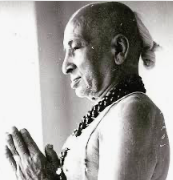Pilates and Yoga are often paired together under the one umbrella, and that’s not without good reason. They share many similarities but they also have their key points of difference.
What is important to note is that both Pilates and Yoga are mind-body conditioning methods with a holistic approach to achieving health and wellness.
Yoga
While there are many physical benefits to practicing yoga, and it is excellent for your overall health and wellbeing, yoga is merely a tool to help you influence and access your mind. Yoga harmonises or joins the mind, body, and spirit with the goal being to lead a person to a state of peace and stillness.
The physical component of yoga including the poses and movements you practice in a yoga class is called asana. Asana is one of the eight limbs of yoga. The physical benefits of asana can include improved strength, flexibility and mobility, just to name a few. The main reason we practice asana is to calm the mind so that we can sit still in meditation.
Sri T Krishnamacharya, the father of modern yoga
The meaning of yoga as given in Sutra 1.2 of the Yoga Sutras of Patanjali is to calm the fluctuations of the mind.
Chitta vritti nirodhah
~ Patanjali
Pilates
Pilates is often thought to be similar to yoga, which is not surprising since Joseph Pilates the founder of Pilates practiced yoga. It was during World War I that Jospeh Pilates created, practiced, and taught his physical fitness program, previously termed ‘contrology’, to aid in the rehabilitation of the disabled and sick. His guiding principle is that the ‘whole’ body must be exercised to achieve good health.
Joseph Pilates developed a series of exercise that can be performed either on the floor (mat Pilates) or on the various pieces of apparatus he invented. The Pilates equipment is designed to condition the entire body, and through core strengthening exercises improve strength, flexibility and ultimately correct posture, body alignment and balance.
Joseph Pilates on the Pilates Reformer
Similarly to yoga, Joseph Pilates regarded his method as a holistic approach and a path to total health, rather than just a physical fitness program.
Pilates is the complete coordination of mind, body, spirit
~ Joseph Pilates
So while you can improve your strength, flexibility and mobility from both methods, the main goals of the two practices differ. The full practice of yoga aims to calm the mind, and the Pilates method aims to improve physical strength. Both Pilates and yoga aim to improve the mind-body connection.
At our beautiful Sunshine Coast studios, CGM Pilates & Yoga, we offer both Pilates and yoga, and enjoy the benefits of practicing both methods. For enquiries visit us online here or pop into our Maroochydore studios and try a class.



